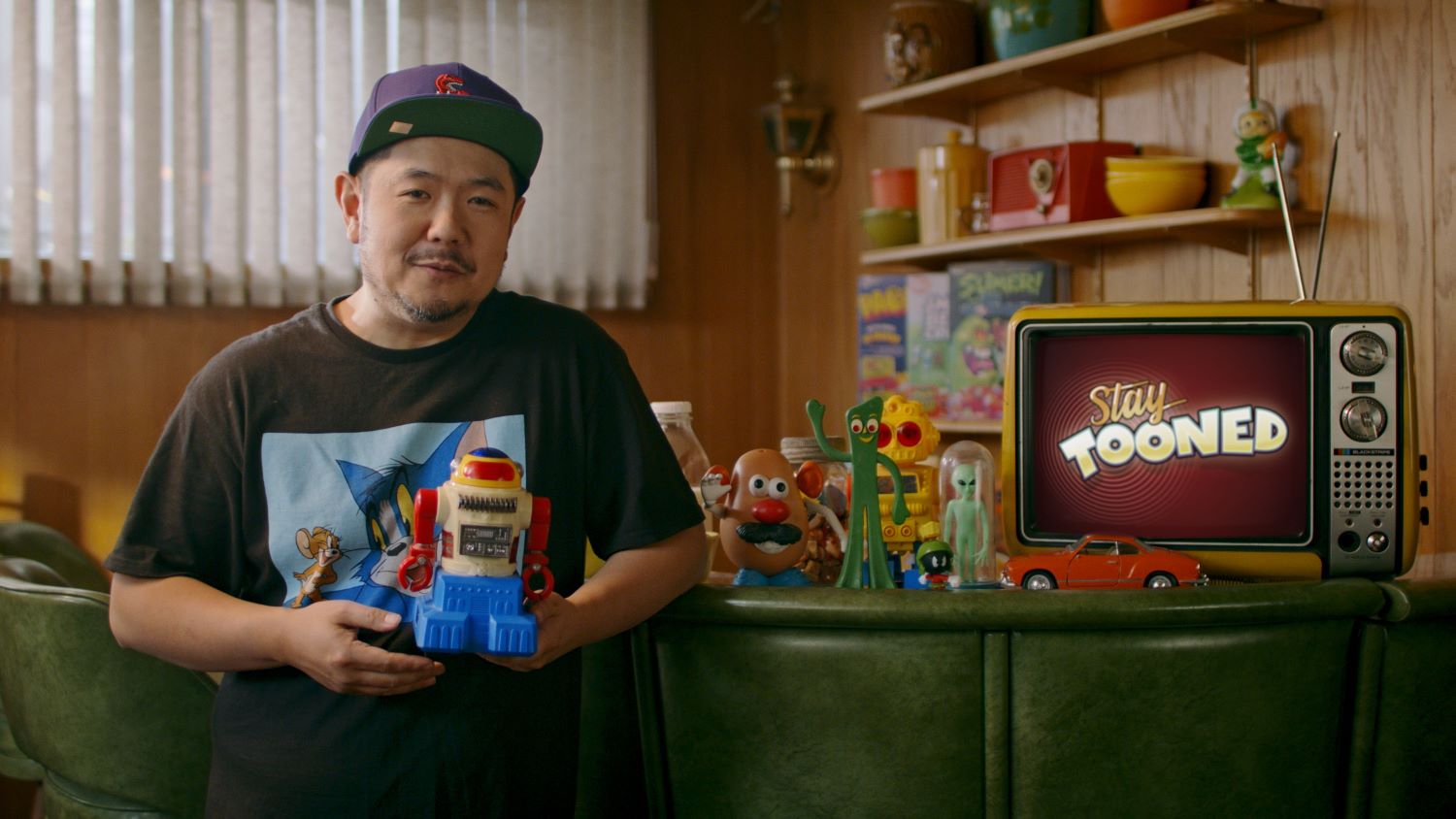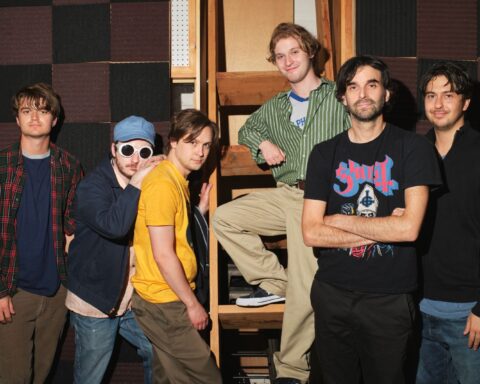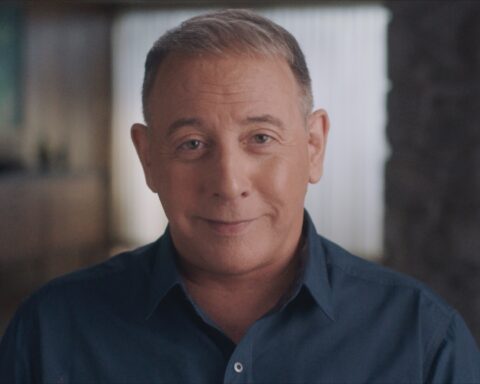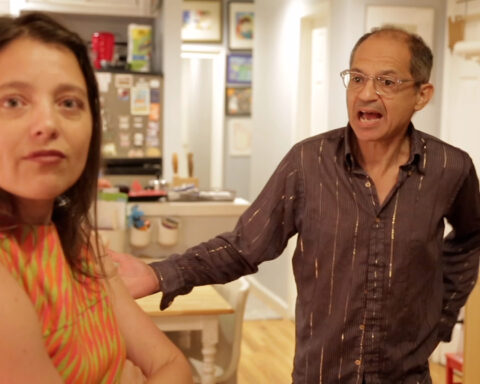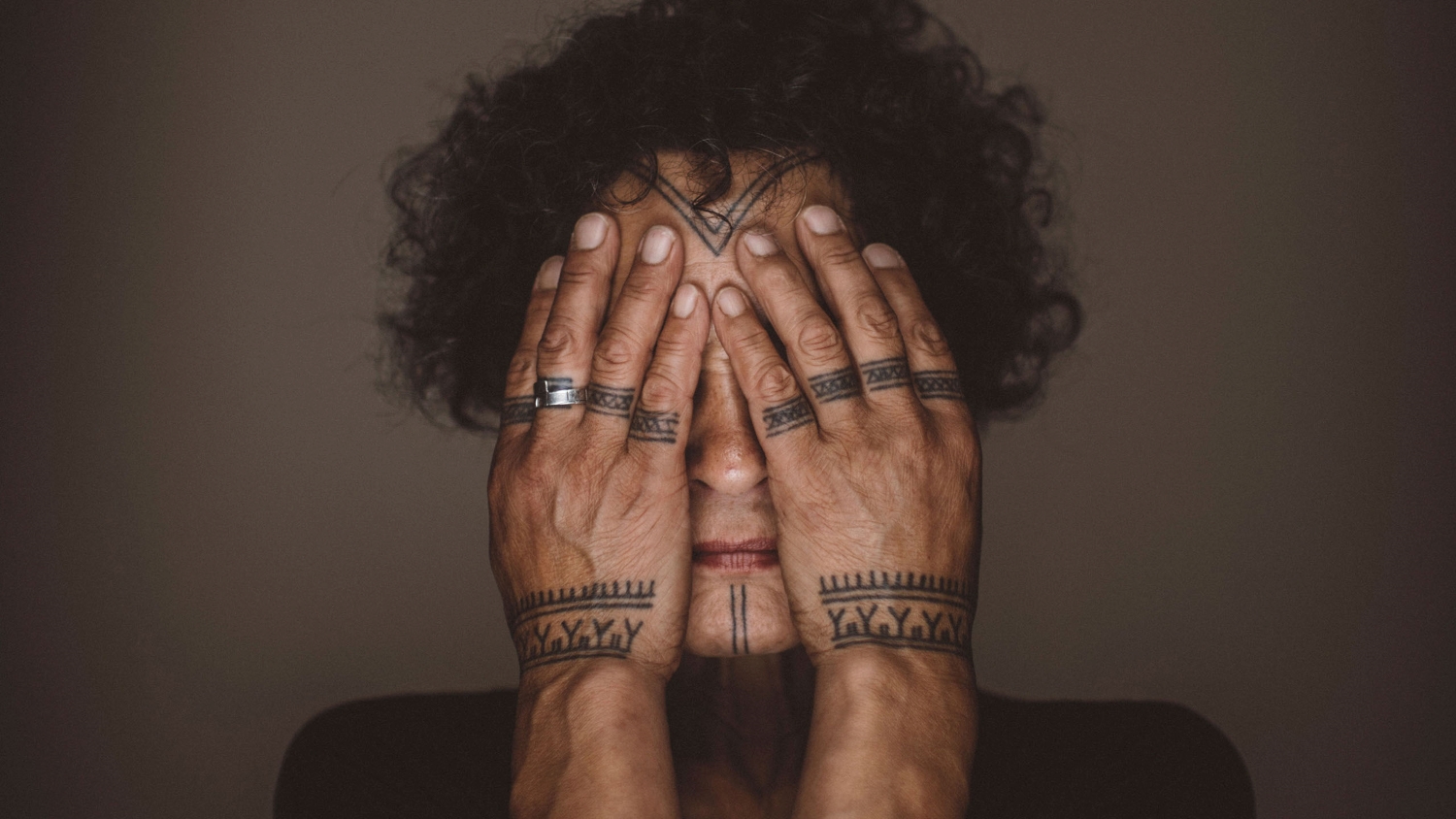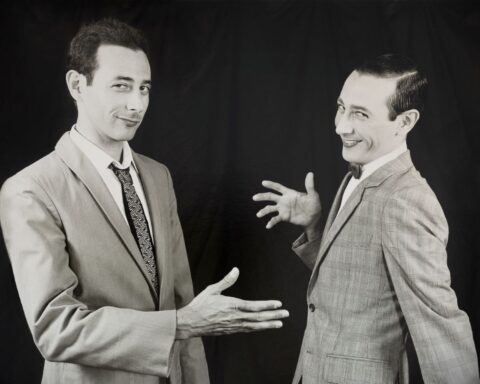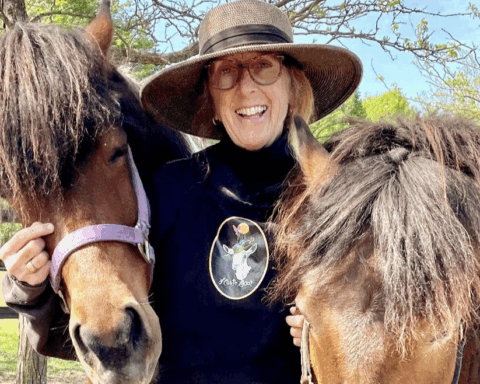Is any film genre as influential as animation? (Besides documentary, of course.) Animated films and series often hook film buffs when they’re young, but audiences might overlook the impact that these works have I defining ideas they carry throughout their lives. Stay Tooned, a new six-part documentary series, examines the role of representation, both onscreen and off, in animation.
Hosted by Eric Bauza, the voice behind beloved characters including Bugs Bunny and Daffy Duck and figures in series like The Adventures of Puss in Boots, The Powerpuff Girls, and Uncle Grandpa, the Scarborough native joins a who’s who of animation aficionados to unpack the power of images. Episodes consider sexuality, stereotypes and casual racism, homophobia and queer-baiting, villains, PSAs, and the capitalist impulses that create messages both subliminal and overt. Bauza joins filmmakers like Domee Shi (Turning Red) and talents including Lake Bell (Harley Quinn), Russell Peters (The Jungle Book), and ND Stephenson (She-Ra) to unpack childhood favourites and edgier adult animated series that have, for better and for worse, shaped the minds of generations of viewers. The series is a crash course in the power of critical viewing, and an engaging seminar that covers one of the most under-examined corners of cinephilia.
POV caught up with Eric Bauza via Zoom to discuss Stay Tooned, the power of representation, and the state of animation ahead of the series’ release on CBC Gem.
POV: Pat Mullen
EB: Eric Bauza
This interview has been edited for brevity and clarity.
POV: What were some of your favorite animated shows growing up and did you see them any differently while looking back at them for Stay Tooned?
EB: I was born in the ’80s, so I was a victim of the capitalism episode. In my everyday living now as an actor, whatever they did worked. My parents bought every one of those Transformers. I took my six-year-old son last night to check out the CN Tower. I worked there in the mid-’90s after high school through college. I traded my cousin his collection of original Generation 1 Transformers for CN Tower tickets. To him, that was a fair trade, but years later, Hasbro is re-releasing the exact same toys in the original ’80s’ packaging. Even though I have the original Generation 1 toys, it still gets me. Nostalgia and capitalism is a bad combination.
As an actor having voiced Drift, who is an autobot on Transformers, it’s even worse because I’m now collecting things that I’ve done voices on. It is a vicious and endless cycle, unfortunately. [Laughs.] That is what I’m learning through my bank account the hard way.
POV: What is it like for your son having Bugs Bunny for his dad?
EB: He knows when it’s Mel Blanc doing Bugs, and he knows when it’s his dad doing Bugs. Whenever we’re in the schoolyard, he waves me over in front of his friends He’s like, “Hey dad, come over here”. “Do the voice.” I’m like, “Eh, what’s up, doc?” Then he’s like, “Okay, go away. That’s all we need.” He’s my little manager.
POV: How did you choose which shows to represent in the discussions for Stay Tooned?
EB: I think we just lucked out. We managed to get ND Stevenson who is the showrunner of the She-Ra reboot. I wish that we had someone who represented She-Ra from back in the day, but we still had the show to examine even if we didn’t have someone representing the show who could analyze it and break down what was happening during that era. Nostalgia and reboots won’t cost big companies like Dreamworks or whoever owns the intellectual property rights to recreate a show versus creating an original show from scratch. They’re not taking a lot of chances.
But what they are doing again is concentrating on telling new stories with classic characters, but with more realistic relationships and situations. Even when it comes down to the design, you look at something like She-Ra: back in the ’80s, everyone was almost cookie-cutter, the same shape. Nowadays, if you look at a show, there’s a variety of body types when it comes to design. It’s grounded in some kind of reality. It’s refreshing to know that’s the expectations for our kids. Kids aren’t going to feel like, “now I’m seeing She-Ra or He-Man, so I have to have giant biceps and the abs to be this hero.” They’re taking more realistic approaches.
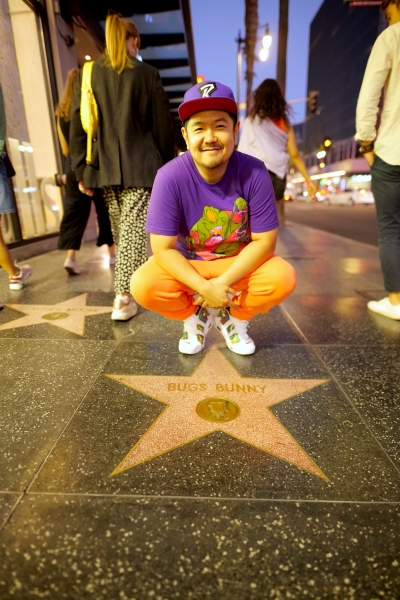
POV: Was there a series or film where you really first saw yourself represented on screen? Or ones where you really noticed an absence of representation?
EB: If we’re talking about film, definitely Data from The Goonies. He’s one of the only representatives of an Asian kid in any film. Where I saw myself in cartoons, it was a little bit harder to find. To be perfectly honest, we cover it in the racism episode: I’m the sixth person to voice Bugs Bunny. As we know, Bugs Bunny was created in the ’40s and what was happening in the 1940s was a different time. The United States was at war with Japan and they were depicted in propaganda cartoons as the enemy.
It was probably just a sign of the times of what was happening then, but they probably didn’t think those cartoons that depicted certain cultures and races in a bad light would be on YouTube in 2022. They were made to be shown in theaters as one-off cartoons. But here we are 2022 and I’m hosting a show that stares at these issues right in the face. It’s good to talk about them, examine them, and learn from them as opposed to sweeping them under the rug. That’s the only way we’re going to learn and evolve from where we were to where we’re going.
POV: How do you feel representation is nowadays for the voice actors? You talk about the Apu character from The Simpsons and there was the documentary about him a few years ago, The Problem with Apu. Has much changed?
EB: Now, more than ever, we’re looking towards representation in a more accurate sense. We want authenticity. It’s strange because when I started voiceover, the most appealing thing about it was that it didn’t matter what you looked like. It only mattered that you could act the part. But that also meant it could close off opportunities for certain minority groups as we saw in The Simpsons where it was pretty much whoever’s in the room would do the voice. I’m sure it was more of a budget thing, whereas saying, “We need to hire a person of that ethnicity” might cost an extra paycheck. In voice acting, you get three voices for the price of one. As soon as you voice a fourth character, that’s when they have to start paying you a bit more.
They probably weren’t even thinking that it was going to be offensive or racist. I’m sure Hank Azaria is not a racist, but the fact that he’s putting on this voice that he is not actually a part of culturally, nowadays that that is considered walking the line.
I think it levels the playing field. There aren’t a lot of roles for minorities out there, so they should be auditioning people of that race to represent them, at the very least. I don’t remember the last time there was a Filipino character as the lead.
I’m under NDA even, although I’ve never booked the roles, there are a couple roles that I’ve read for recently where, halfway through the script, I didn’t even realize that it was a Filipino character until they started talking Tagalog. I almost cried. “A Filipino character in a main role for a Disney cartoon, for a Nickelodeon show?” I was very impressed and very happy. You want that level of authenticity. If it’s a very specific story, you better make sure that whoever’s behind the microphone or behind the pen writing the story has some kind of anchor into that. It’s not to say that if there’s a story about Filipinos that only Filipinos can write about it, but at least some person in the room should be representative. I think there needs to be that authenticity checkpoint for the story.
You want that level of authenticity. If it’s a very specific story, you better make sure that whoever’s behind the microphone or behind the pen writing the story has some kind of anchor into that. – Eric Bauza
POV: A few weeks ago, now-former Disney CEO Bob Chapek got into hot water when he said that animation is just kid stuff. He made some comment how, after putting the kids to bed, no grown-up wants to watch cartoon. How do you feel about that?
EB: From corporation to corporation, animation has always been seen as the afterthought, kind of like, “Eh, it’s just cartoons.” Exactly as you said. Even though we see year after year, box office dollars after box office dollars, downloads after downloads, DVD purchase after DVD purchase, it’s still an important part of your life as an adult, especially now with adult animation. I was just at the Toronto Animation Festival and I made a statement saying, “I work in kids’ cartoons.” A lot of it has a lot to do with intellectual property rebooting itself, which is fine. I’m very honored to be Bugs Bunny’s voice doc, don’t get me wrong. [In Daffy Duck voice] Trust me, I love voicing Daffy. But it seems to be that in adult animation, that’s the only place these days where they don’t mind taking a risk on original ideas and original stories. I think that’s fascinating that adult cartoons, like 18 and Up, Rick and Morty, or Family Guy, or even The Simpsons or any other original attempts at storytelling, adult animation seems to be the only place where they’re like, “Yeah, give us the next new idea,” versus “We don’t wanna see an adult version of a kid’s cartoon. We would still rather see an original adult TV show from an original idea.” I applaud it. That’s some advice for the young future creators out there. You might want to have that one adult idea in your back pocket because that one might end up going the distance, versus the twelfth remake of Ninja Turtles. Cartoons are still for the big kids or for the adults. If they weren’t, we wouldn’t have those adult animation blocks on television.
POV: A critic asked me recently why we don’t consider films like Avatar or Black Panther animation because we’re seeing more films, especially in the bigger Marvel movies, etc., where actors are a lot of doing motion capture and they’re so VFX heavy. Where do visual effects end and animation begins now?
EB: I remember working at an animation studio and it was the same weekend that Spider-Man 3 with Tobey Maguire and Grand Theft Auto 5 came out. That was one of the very first weekends where we saw a video game make more money than a big blockbuster movie. The returns came in for Grand Theft Auto and it was beyond what Spider-Man 3 made. Of course, Spider-Man 3 was the third one in the trilogy, maybe not the favorite one and people were probably already done with it. But the fact that a video game made more money than a movie was a big deal. It was a turning point. I mean, think this though: You’re working on a video game for a year and you’re getting paid over a hundred thousand dollars. That’s not a bad paycheck, but if you think about it, this video game that you got paid a hundred thousand dollars for is making almost a billion dollars. You’re thinking, “Where’s my cut? I know I signed the contract, the ink is still fresh, give me my cut.” There’s no protection there for the performers. Where does it end? What is the fine line because they actors in those motion capture suits are performing these characters and there’s probably a little bit of finessing with animation. It’s not always going to be a perfect performance capture. Animators are involved. I’d love to live in a world where all the artists and all the creatives are taken care of and compensated properly, especially if a game hits a certain tier of income. But the question where is it animation and where is it live action is a pretty good question that could be answered in season two.
POV: I look forward to that season. One of your episodes this season, though, features Domee, Shi, who had a hit this year with Turning Red. What was it like for you seeing Toronto figure so prominently in animation?
EB: I think Mike Myers said it the best: a Canadian is the most Canadian when he is not in Canada. I won’t stop talking about how proud I am to be a Canadian and to see Toronto represented even just as a backdrop in something that is now injected into mainstream pop culture is amazing. I love this city and it’ll always be home to me. The very fact that I’m talking with you now about a show that I have on the CBC is insane. Being from this city and this country is something that I’ll always be proud of. And… [In his best Bugs Bunny voice] tha-tha-tha-that’s all, folks!




